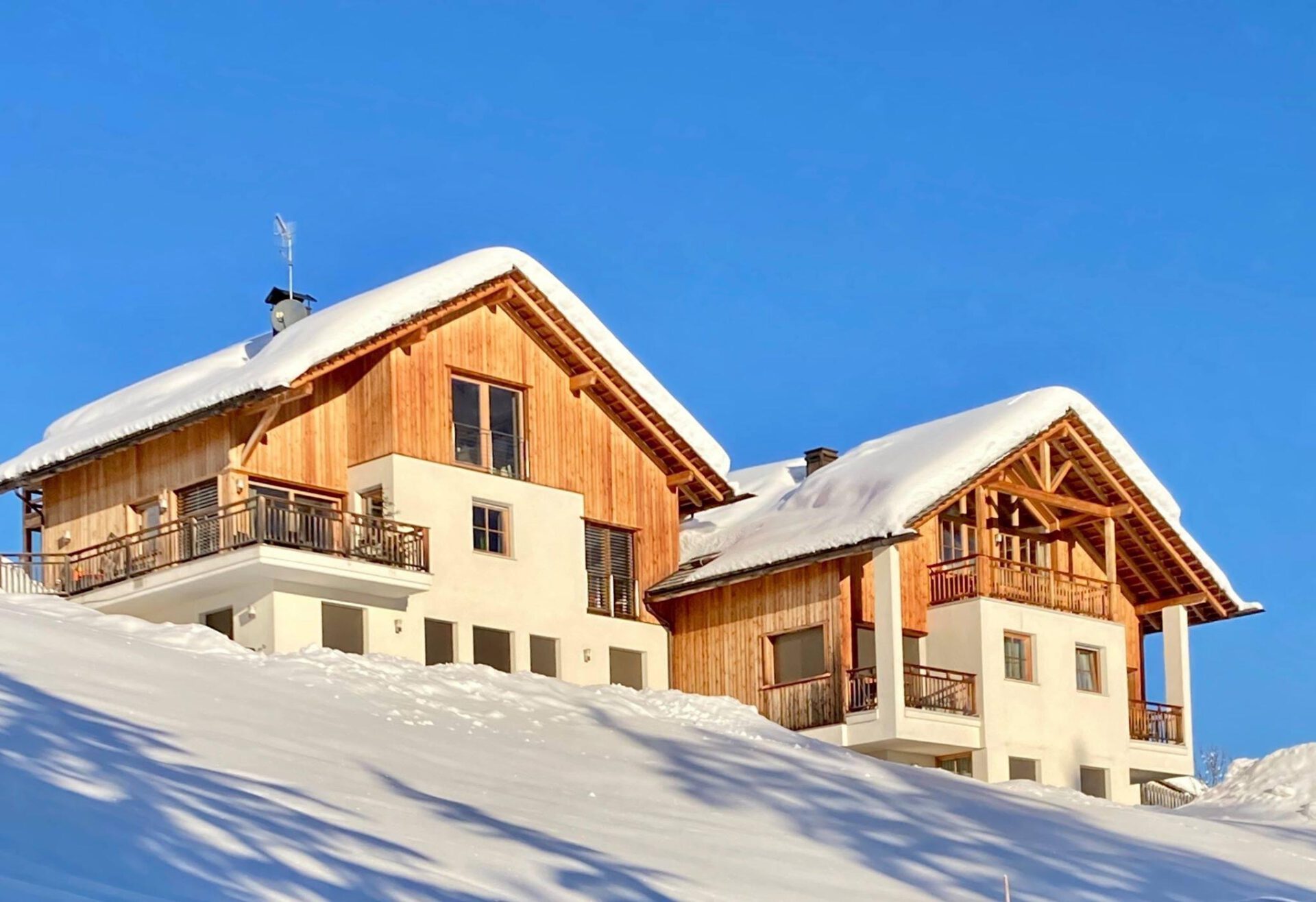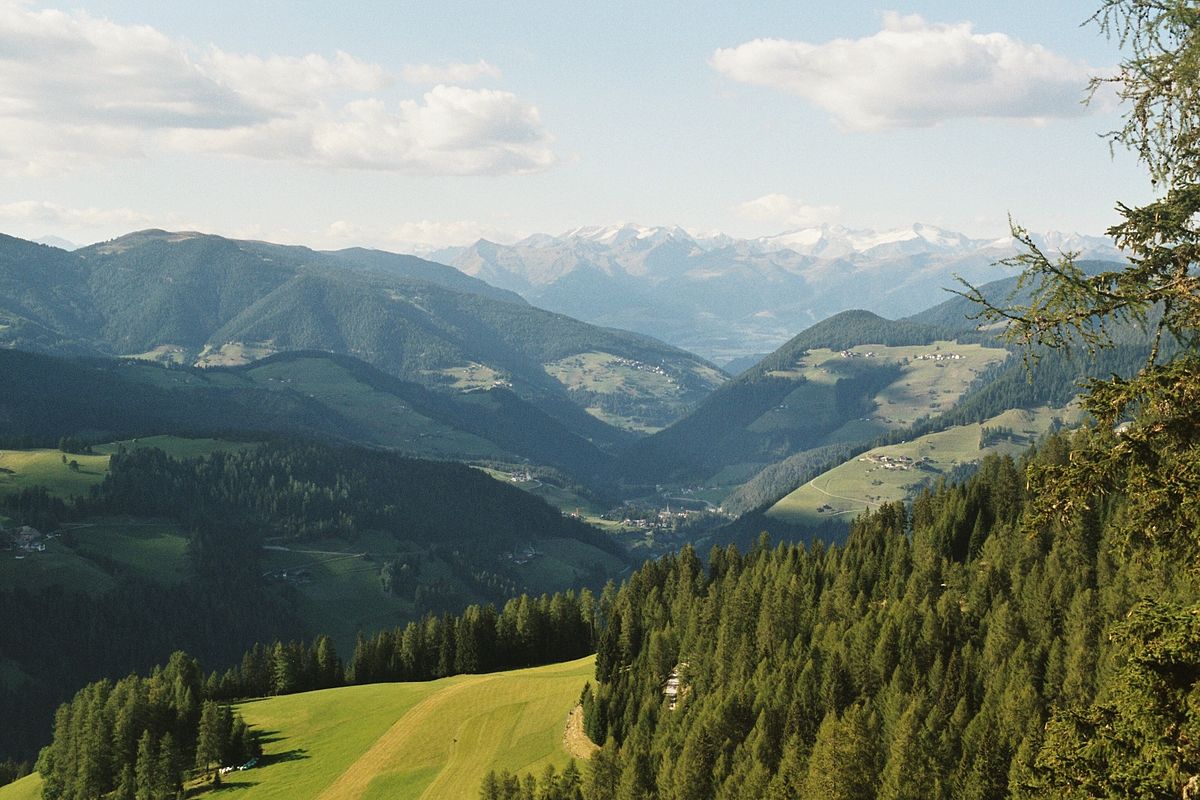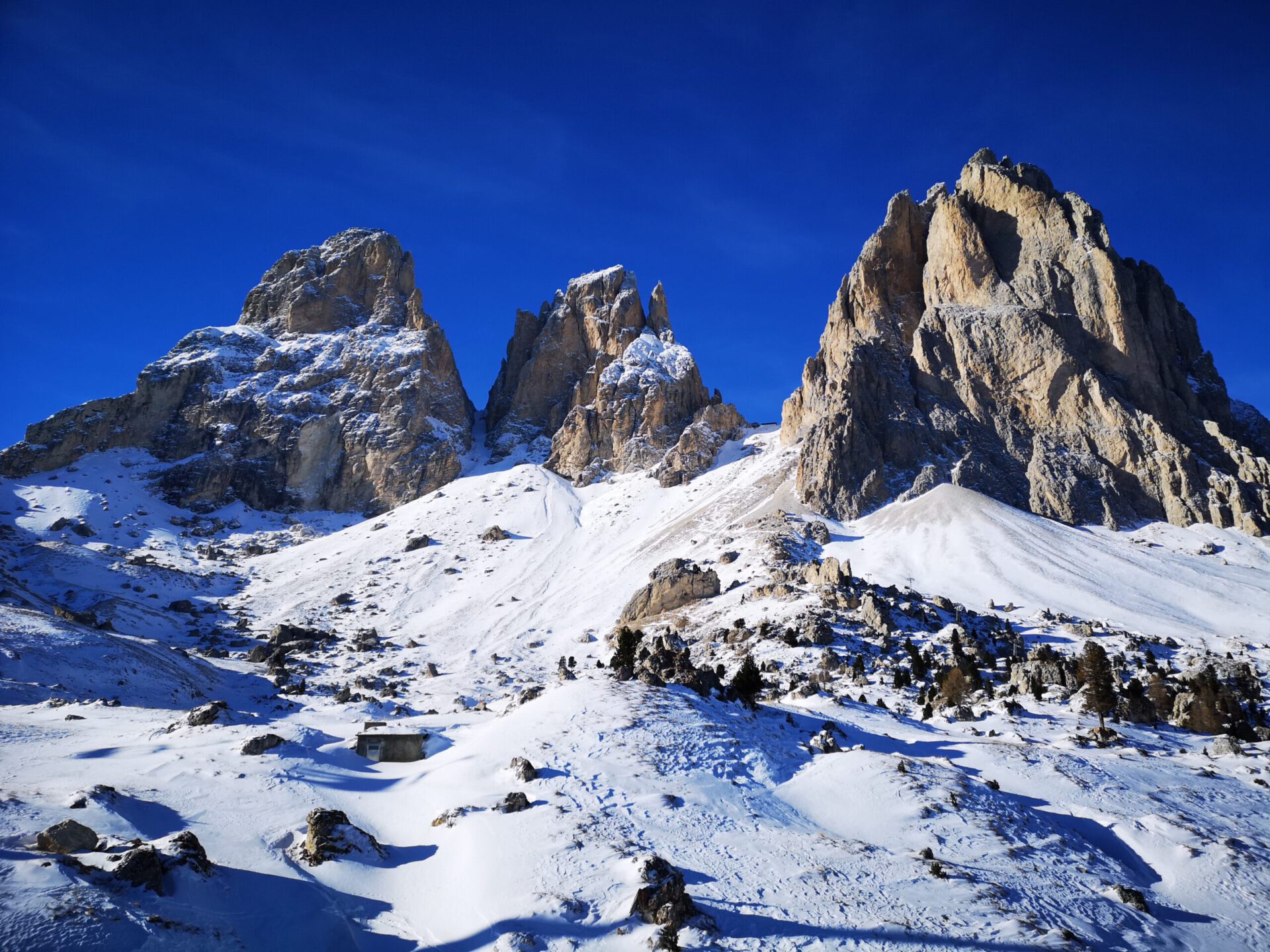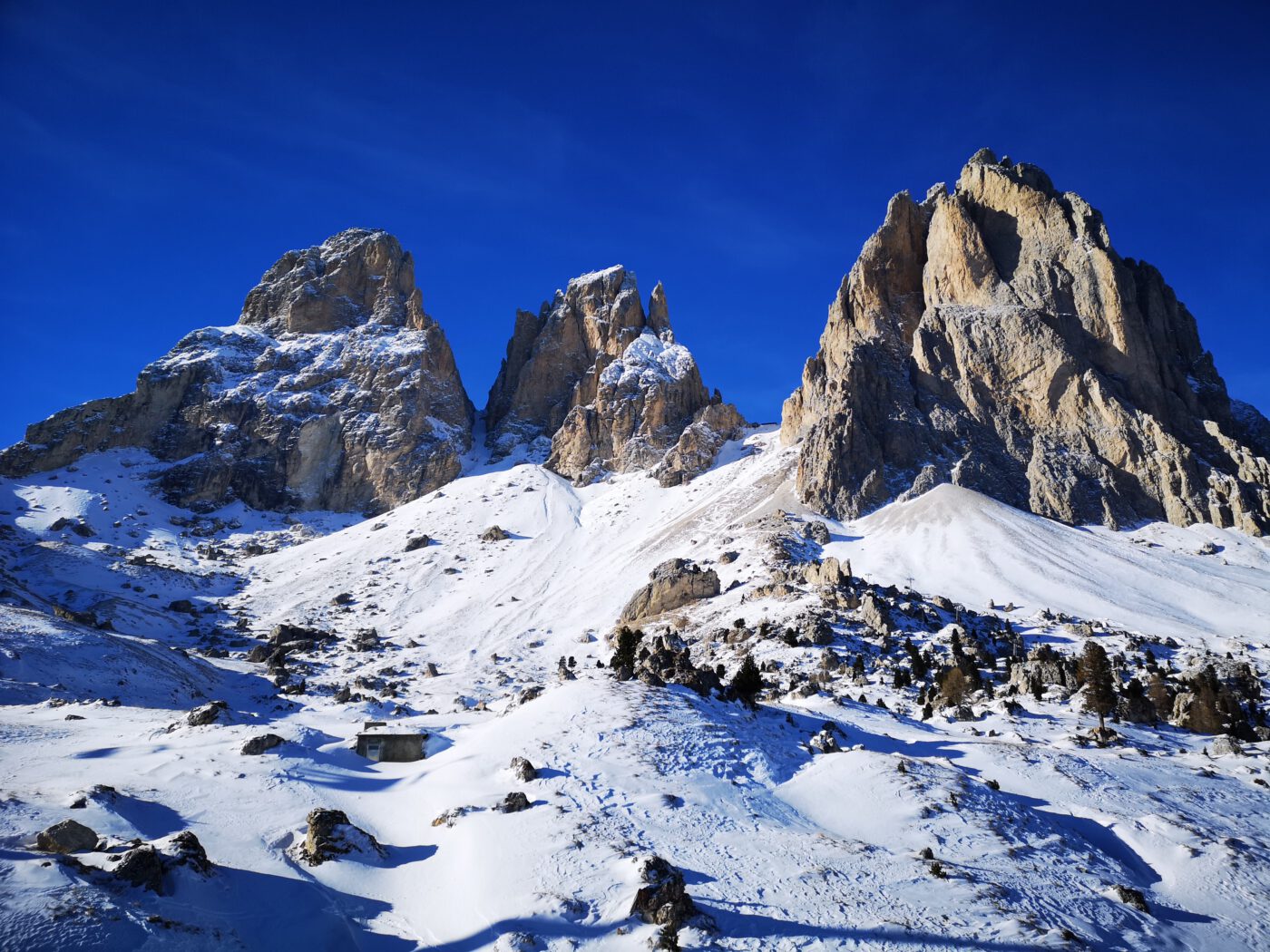Have you ever heard of Ladin? No, not Latin, Ladin. They are related, but we’ll come to that later. Despite thinking myself quite au fait with Italian regional identities–I’ve long enjoyed trying to decipher the Neapolitan dialect used in L’Amica Geniale and have diligently picked up a few Tuscan sayings over the last couple of years–my first encounter with the Ladin language came later in life, in a taxi from Bolzano station into the Italian Dolomites of Trentino-Alto Adige. I was heading to Alta Badia, a cluster of villages and valleys perched between South Tyrol and Trento, for a skiing holiday. Around 30,000 people make up the Ladin-speaking community in this mountainous region, spread across five valleys and three provinces: Val Badia valley and Val Gardena valley in South Tyrol, Livinallongo and Ampezzo in Belluno, and the Val di Fassa valley in the province of Trento. They’re all in the Dolomites, but quite distinct from the rest of the mountain range. Permanent settlements in Alta Badia date back at least 4000 years, with nomadic tribes passing through for millennia before that. When the Alps were integrated into the Roman empire in the first century BC, the native mountain people (known as the Raetians) adopted the vulgar Latin spoken by the Roman soldiers and tradespeople. Over the years, this was transformed into Ladin. The Ladin language is so isolated that not even my taxi driver–who went to school in Bolzano, the closest big city to Alta Badia–spoke a word of it.
To find the Ladin community, we headed right into the mountains, to the exquisite village of Corvara in the Val Badia Valley, considered to be the principal town of Alta Badia and where nearly 90% of the inhabitants speak Ladin. It’s a prime skiing resort located right on the slopes, with access to the Dolomiti Superski region. Among the impressive network of modern, fancy lifts are nods to traditional life: compact farmhouses in small clusters called viles, where farmland would once have been shared by the village; a ski-lift pulled along by indigenous Noriker horses in Armentarola; and slopeside bombardini, the Italian version of eggnog.
Unlike previous ski trips, I got a sense that there was a lot more to the culture here than pounding the slopes and drinking mulled wine, and I spent a day skiing with Nicole Dorigo, who grew up speaking Ladin at home. “Ladin is not a dialect, but its own language; one that predates modern Italian by centuries,” Nicole tells me. She explains that the awareness of having their own language has always been important to the people in Alta Badia because it’s an integral part of their identity and link between the five communities, as well as an important means of self-assertion towards the outside. She shared how Ladin is actually closer to Catalan and Provençal than its Swiss-German neighbours. “Bun de, bëgnodü!” is how you will be greeted in Alta Badia; not German, not Italian, but something entirely its own.
Ladin, beyond the language, is a culture too. After the fall of the Roman Empire, the local tribes were constantly under threat from Bavarians, Lombards, Franks, and Slavs. During WWI, violent fighting took place across these mountains, and the region was tossed from the Austro-Hungarian Empire to Italy. The region is rich with myths and legends about the Marmot Kingdom of Fanes, the princesses Moltina und Dolasilla, the wicked magician Spina de Mul, and the hero Ey de Net. The marmot, a fluffy forest creature, is still a symbol of peace and modesty here that you’ll see on postcards and etched into local wood carvings.

Unlike many indigenous communities, Ladin is luckily not in danger of dying out. As with Nicole’s family, it’s still the predominant language spoken at home in the five Alta Badia towns and surrounding countryside. There’s also weekly Ladin newspapers, radio, and television programmes and, over the last few years, culture clubs, poetry volumes, musical troupes, and theatres have contributed to a re-awakening of the ethnic consciousness of the Dolomite Ladins. An organisation called Nos Ladins (We Ladins) hosts events like forest bathing, night sledding, farm visits, and “wolves night” throughout the winter season.
Centred amongst the majestic Dolomites, it follows that skiing is also a big part of their culture. “It was our main social activity as a child,” Nicole explains. “We’d ski every weekend in the winter, even if it was just a few slopes before lunch. It wasn’t until I moved to Bolzano for university that I realised I actually enjoy it.” Over a glass of local white wine on her now-beloved slopes, we say “Vives!”, or cheers in Ladin.
Like all great Italian things, the Ladin community centres around food and wine. We tasted this first hand when we drove into the hills for dinner at Maso Runch Hof, close to the village of Badia itself. The mountain farm is run by a local family, and, in the summer months, there are horses to ride and eggs to collect from the chickens. Nicole assures us this place is authentic as it gets. It was snowing the evening we visited, the steep bends of the roads especially treacherous. The windows of the farmhouse were aglow against the gently falling snow in the dark outside, like something from a fairytale, and we were ushered into the warmth of a roaring log fire. The dining rooms are split into traditional stuben, with wood-panelled walls and low ceilings to preserve the warmth. The waiters and waitresses are dressed in traditional tartan costumes–more Swiss-looking than German–and the menus are printed in Ladin: the restaurant’s intention is to preserve and share ancient Ladin cuisine.
The six-course tasting menu is flavorful, filling, and meat heavy. We taste a barley broth with smoked pork called panicia, polenta and beef goulash, and pork shanks with sauerkraut interspersed with various iterations of cajinci and tutres, deep fried stuffed ravioli that are truly mind-blowing. It’s shocking to remember how cut-off we are in Alta Badia even now; it’s an hour and a half drive from Bolzano, three hours from Venice, and entirely inaccessible when roads are blocked with snow. Until relatively recently, the region had to be entirely self-sufficient. In winter, only a few root vegetables and greens like spinach were available. All other vegetables and fruits were stored or preserved in jams and compotes, and you can see nods to this on Maso Runch Hof’s menu.

There’s been a resurgence in celebrating this unique local cuisine, not just in rustic farmsteads like Maso Runch, but also in fine-dining affairs like chef Norbert Niederkofler’s three-Michelin star St Hubertus at Rosa Alpina in San Cassano. Norbert’s strict “Cook the Mountains” philosophy means he’s entirely reliant on Dolomiti and Alpine produce, ruling out all imports. This means no olive oil, no lemons, and no fruit out of season; serious limitations that cause seriously creative cooking. The restaurant is currently closed as the hotel undergoes refurbishment until winter, 2024; in the meantime, Chef Norbert has turned his attention to Atelier Moessmer Norbert Niederkofler in Brunico, a textile store with a state-of-the-art kitchen featuring the same creativity and passion for the region.
For the last few years, a clever “Taste for Skiing” initiative has seen a flurry of interesting dining concepts come to the slopes, inviting the world into gourmet skiing opportunities. Casual, traditional mountainside huts partner up with fine-dining institutions around Italy to create a special dish for the season, with the idea that fair-weather skiers can hop from rifugio to rifugio during their holiday, always eating well. You can’t go wrong with a hearty bowl of stew at any of the rifugi, but some culinary highlights include the highest wine cellar in Europe (at a whopping 2075m!) at Rifugio Bioch Piz Sorega; world class seafood brought in by skidoo at Club Morizino; and guest chefs at Ütia Lee, Ütia L’Tamá, Las Vegas Lodge, Ütia I Tablá, Ütia Pralongiá, and Ütia Jimmy mountain huts.
The Ladin people are future-looking when it comes to their community, open to shaping tourism in their region into something that suits them. Although I still don’t have a handle on the Ladin language and I can guarantee you’ll stop hearing it before the snow-capped Dolomites fade out of view, there is so much you can learn about their vibrant culture, spoken best with the language of food.




